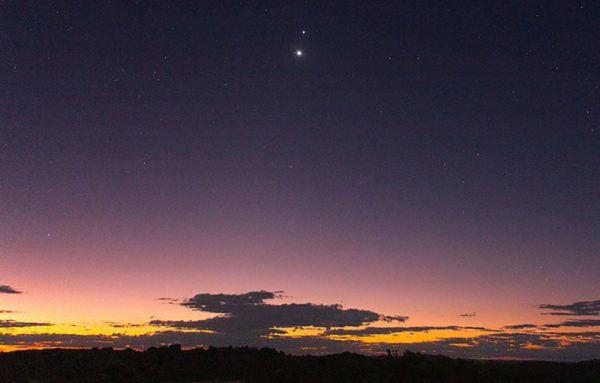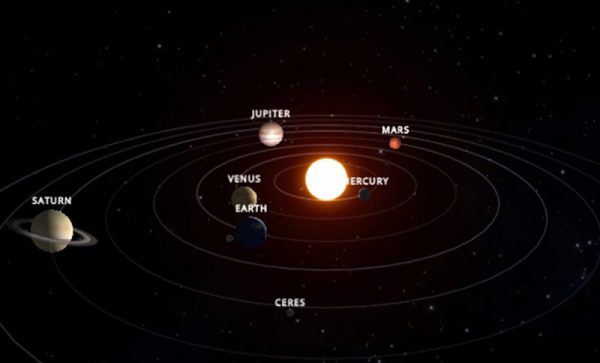If you look to the west for the next day or two in the evening you’ll see a very bright star low on the horizon

Don’t panic, the Greek Titans aren’t going to be released and The Earth is not going to be destroyed. That bright star is actually Venus and Jupiter very close together in what’s called a conjunction.
They’ve been slowly approaching each other for the past several months and reached their closest approach on Tuesday evening June 30.
Unfortunately for Perth, the clouds thought it was perfecting timing to appear over Perth last night but don’t worry, Venus and Jupiter will still put on a great show for the coming days as they slowly move away from each other.
It might surprise you to learn that conjunctions are fairly common in the night sky with a dozen or so planet-to-planet conjunctions during the year and 7 or so Moon and planet conjunctions a month.

All of the eight planets travelling around the sun roughly follow a similar path in the night sky called the ecliptic.
They do this but at different speeds depending on their distance from the Sun.
Over time, we’ll see the planets pass each other in the sky as The Earth and the planets orbit around The Sun, some combining together for a week or so every now and then. So set back and enjoy one of the best conjunctions for the year and keep watch the skies.
Perth Observatory is Western Australia’s oldest observatory and is located 25km east of Perth in Bickley.
This year’s star viewing season will start in late September and will be the first to be run under a new community partnership agreement between the Department of Parks and Wildlife and the Perth Observatory Volunteer Group, which was signed in June 2015.
We have great plans for the Observatory in the coming years and we are looking forward to inspiring the public’s to look up at the wonderful night skies of Perth.
Originally posted as a TweetPerth article: Perth Observatory: No, The Earth is Not Going To Be Destroyed.





